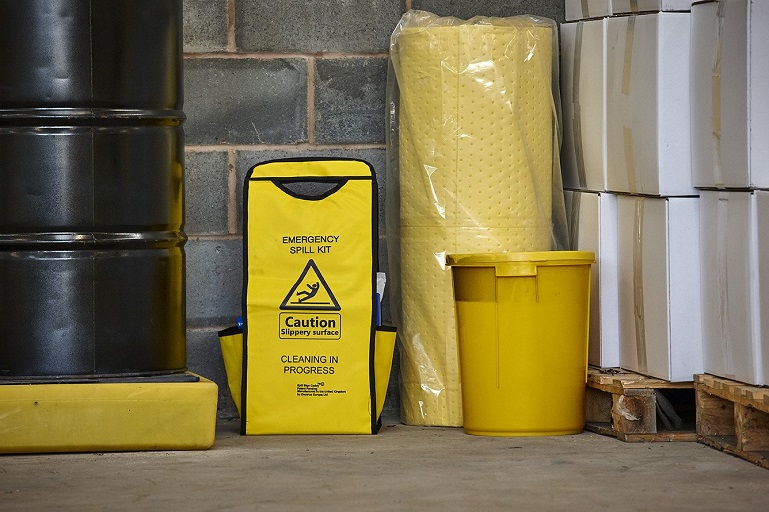Contents
If your facility deals with liquids on a daily basis, then a spill kit is an absolute must-have. Picking the right one is important when dealing with leaks and spills. However, with so many choices available, how do you know which spill kit is best for your business? Determining that isn’t as difficult as it seems, as spill kit manufacturers have made it quite easy. In fact, it’s quite easy only after you have the answers to the following questions.

What Liquids Does Your Facility Store?
Choosing a spill response kit with absorbents that are designed to absorb coolants when responding to an oil spill, and vice versa can be an extremely costly mistake. Similarly, having a spill kit with limited compatibility when responding to corrosive liquids may cause an undesirable chemical reaction. That being said, you should know what liquids are used in your facility before selecting the right kit to respond to potential spills and leaks. Generally, spill kits are divided into three categories – universal, oil and chemical. Universal spill kits contain absorbents for oil, coolants and other non-corrosive, water-based liquids. Oil spill kits contain absorbents for oil-based liquids and are generally used to clean up oil spills on water. Chemical spill response kits are used for corrosive liquids and liquids of an unknown origin.
What’s the Volume of the Worst-Case Scenario Spill?
Determine the volume of liquid that can be spilled from a single tank, drum or other containers. Drums, for instance, are usually either 30 or 55 gallons, so that’s your answer right there. However, if you’re storing the liquid in totes, then consider the volume of the largest tote, which can range anywhere up to 500 gallons. However, worth noting is that absorbing the entire spill isn’t always practical, so you should also use drain covers and non-absorbent dikes to channel or contain the liquids so that you can recover them with a pump or vacuum.
What Container Type is Ideal For Your Location?
Some businesses put a spill response kit in every area that’s prone to spills, including drum storage areas, loading docks, waste collecting stations and dispensing stations. Others choose to have a few kits that can be carried to the spill area. Small kits have handles that make them portable, while wheeled containers and dollies are used to make large kits portable. When deciding which one of these options is the right one, it’s crucial that you consider the physical capabilities of your spill response team, as well as the environment they need to pass through to reach the contaminated area.

